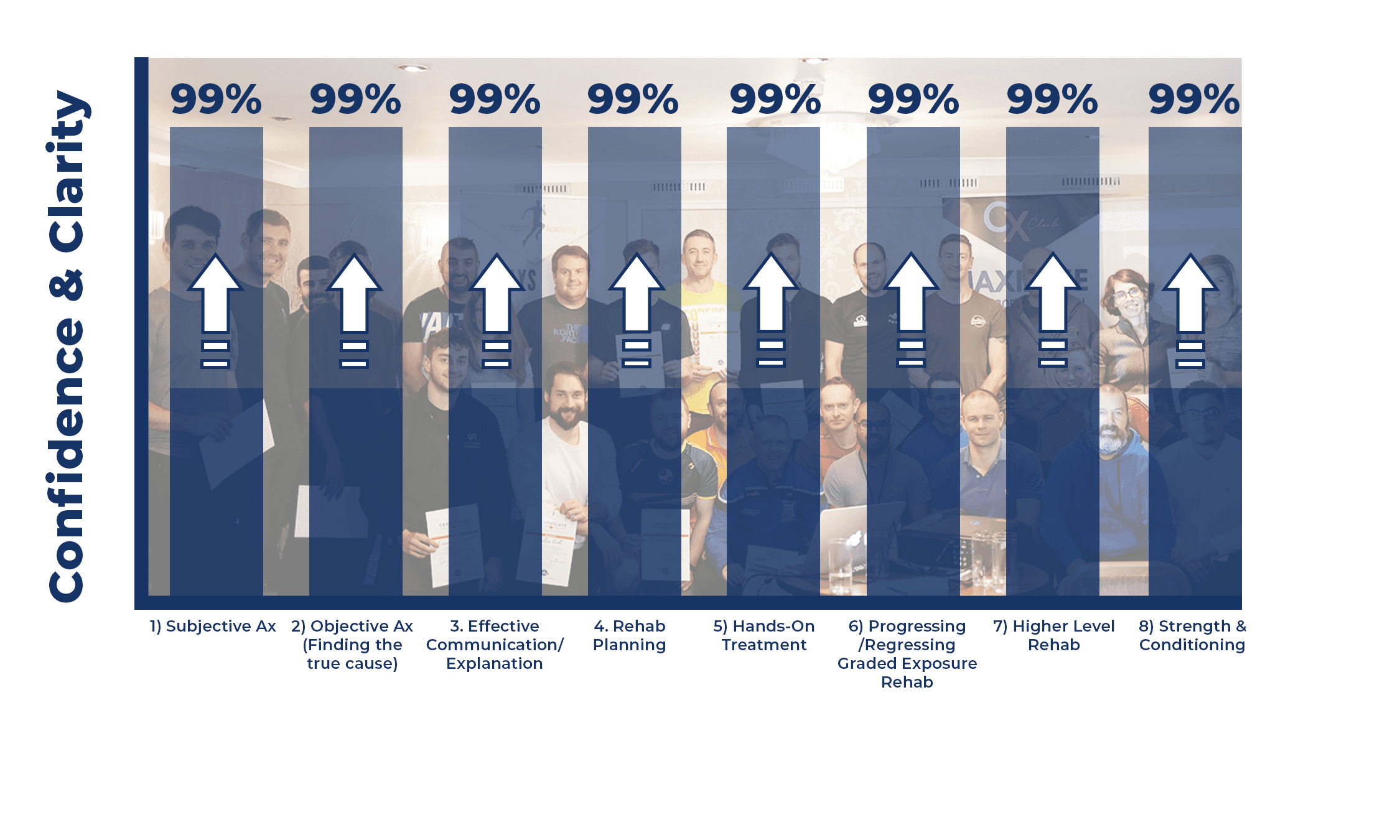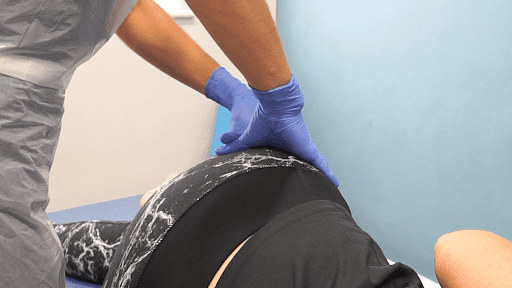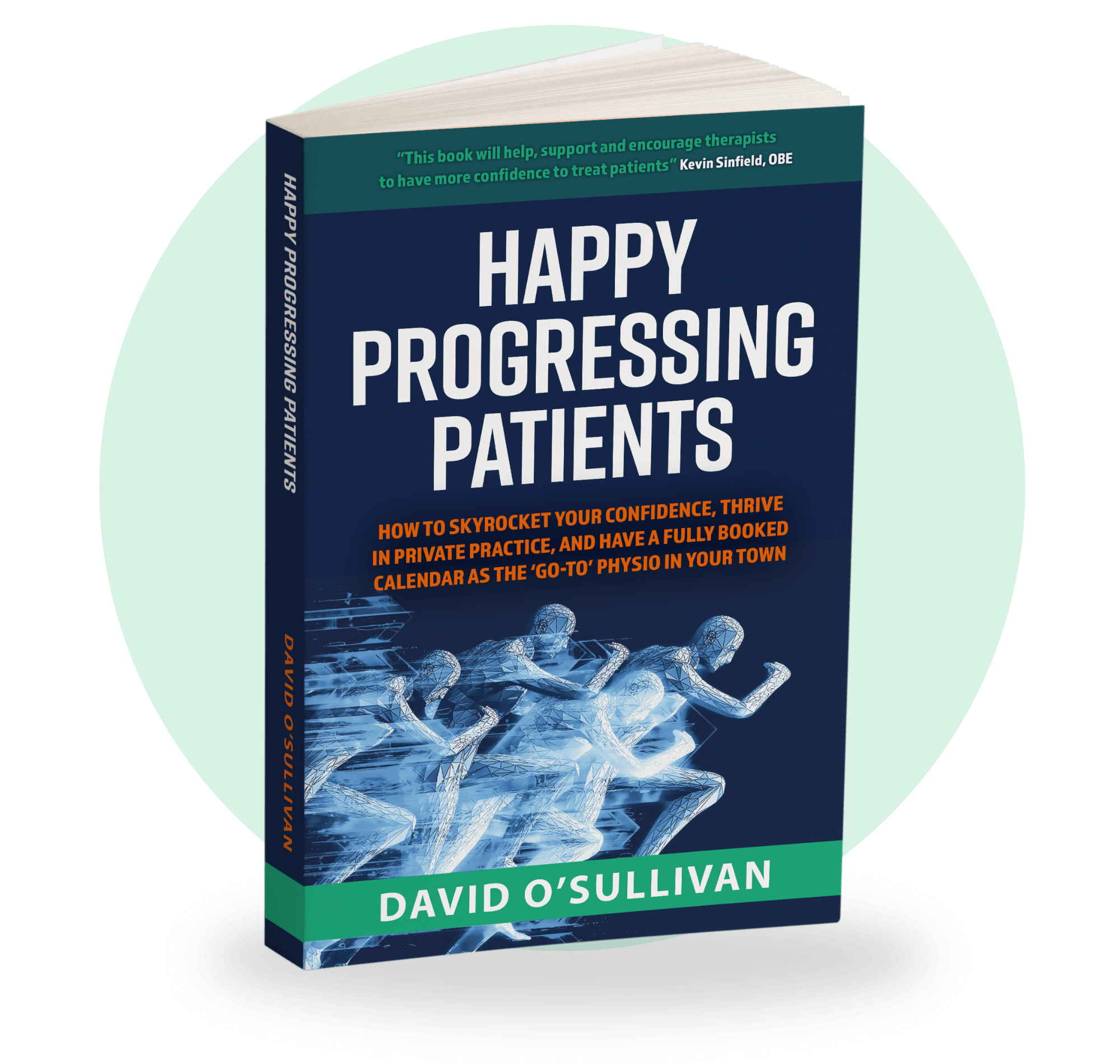
So you want a busy diary?
Do you want to get great results for your patients?
Do you want to get word of mouth referrals?
Do you want to be known as the ‘Go-To’ Therapist in your town?
Right, let me show you how to do this then…
In the quickest and easiest way possible.
Introducing the 8 pillars to maximising your clinical skills…

Pillar 1: Mastering the subjective assessment
You need to ask higher-level questions to get higher level answers from your patient in the limited time you have…
The subjective needs to flow without the patient wandering off…
You need to feel confident/comfortable enough to dig into social history to identify the important psychosocial aspects of the subjective…
If a person has a few injuries, identifying where to start…
By the end of the subjective, you need to really understand your patient’s story.
This puts you in good stead going into the objective assessment.
Pillar 2: The objective assessment
Special tests show they don’t really give accurate results…
So you need a simple way to find the problem even without relying on your hands for palpation in this day and age…
Gain a simple consistent way to assess without jumping methods/techniques/variations between patients…
It takes time
It takes practice.
Don’t get confused with the data or rush through, taking short cuts and get a quick diagnosis.
You’ll need to train your eye to see intricate movements/strategies/movement habits… that may or may not be important.
Keep it simple at all times.
Pillar 3: Effective Communication
You need to feel confident going into the explanation.
Don’t try ‘blag’ your patient ever.
Bring your explanation down to your patient’s level without dragging them up to your level with fancy words…
Don’t talk too much or give your patient too much information
Give them what they need without complicating or overwhelming the process.
Explanations too complicated and not close enough to patients reality
Outline an accurate and realistic timeline to set expectations.
Address the big elephant in the room and that it’s not all hands-on treatment needed.
This leads us nicely to pillar 4…
Pillar 4: Designing A Treatment Plan
Set out a plan and timescale
Show the patient the clear progressions and give them clarity on what is going to happen and needs to happen…
Ensure it is aligned to their actual needs and wants…
Ensure it is realistic
Ensure the appropriate progressions are in place so you don’t need to take silly risks.
Give an honestly expected timeline…
Show the patient, don’t tell them.

Pillar 5: Hands-On Treatment
Ensure you understand why you are doing what you are doing.
Don’t get carried away with your explanation to your patient.
Don’t do too much hands-on, most changes happen almost instantaneously anyways…
Test- Treat – Retest – Progress…
Ensure you are not chasing symptoms and only giving short term relief.
Work smarter not harder.
Ensure your patient is not becoming reliant on it and expecting it every session.
This should have been addressed in pillar 4.
Ensure it compliments pillar 6 at all times.
Pillar 6: Progressing/Regressing Through A Graded Exposure Load Tolerance
You need to know the entry point at which to begin loading…
Gain clarity on when to progress, when to stay as you are and when to progress.
It’s important you have confidence in your exercise selections… and your exercises can get the job done.
What is that job?
To get the patient from A to B up the graded exposure ladder.
Don’t rely on one or two exercises for a particular joint or symptoms.
Pick an exercise to solve a problem the patient has.
When you focus on the patient first, the exercises pick themselves.
From experience, the exercises need to be like Goldie Locks and the three bears approach…
Not too easy or your patient isn’t engaged…
Not too hard or achievable or your patient won’t be successful…
But create enough stress internally and externally… to allow the patient to be engaged yet successful.
Feedback on results should be clear… and the exercise needs to be meaningful for their situation.
Cues should be kept to a minimum.
Ideal world, the patient feels the difference after the exercise.
This creates the same ‘feeling’ after hands-on treatment and so they see and ‘feel’ the value of the exercise.
A big focus on this pillar is more about coordination and building confidence and movement efficiency.
The Goldie Locks analogy works here too for movement efficiency…
Just the right amount of energy used by the patient to get the job done.
This then sets you and the patient up nicely for pillar 7 and the higher level rehab.
Pillar 7: Higher Level Rehab
You are now moving your way through the graded exposure program and you move to higher-level exercises… that stress your patient both physically and mentally.
At this stage, you need to take the emotion out of decision making.
In pro sport, there is no room for error.
At this stage, we justify our progressions and logically progress the patient.
We create perturbations in our rehab exercise choices… for the system to work outside of higher centre control.
You want the higher centres focused on the task involved.
You want peripheral tissues communicating with the spinal cord level without the higher centres having to get involved…
Your patient’s confidence levels are building and they are beginning to move with ‘thoughtless, fearless, movement’…
They are becoming resilient.
They are ready for pillar 8.
Pillar 8 Strength And Conditioning
The final pillar is having the confidence to build strength… both mentally and physically for your patient.
Not only in the gym and moving well under higher external loads…
But thriving in the real world… and appropriate environments under higher internal loads that may stress the person.
The ability to tolerate either physical and/or mental loads and get back into rest and digest is important for long-lasting results…
If you can help your patient achieve this… you will get long-lasting meaningful results and change your patient’s life.
Simple.
Let me guide you.
Let me make sure you get there the quickest way possible.
Secure your FREE ‘Go-To’ Therapist CPD Session right here:
/strategy-call
I’ve got just a few left for the month and right now what I’m going to teach you is more important than ever.
It’s 30 minutes that could change your career forever and completely risk mitigate your clinic even through a pandemic.
Go ahead and save your spot right now:
/strategy-call
Dave
Get Your FREE Copy Of The Amazon #1 Bestseller That Holds The Secret To Confidently Treating Any Patient!
Download a Free ‘ebook’ copy of the 8-Step ‘World Cup’ Treatment Plan that helped my private patients achieve full recovery and made me a ‘go-to’ physio for complex cases…
